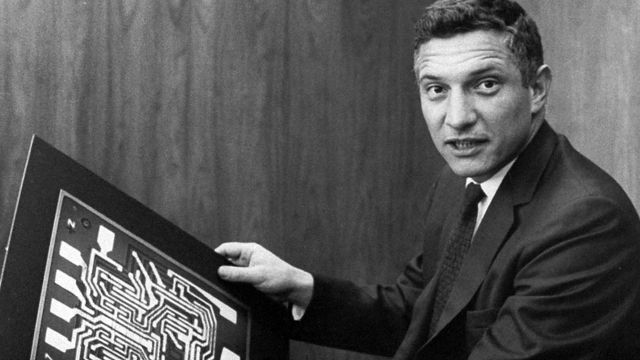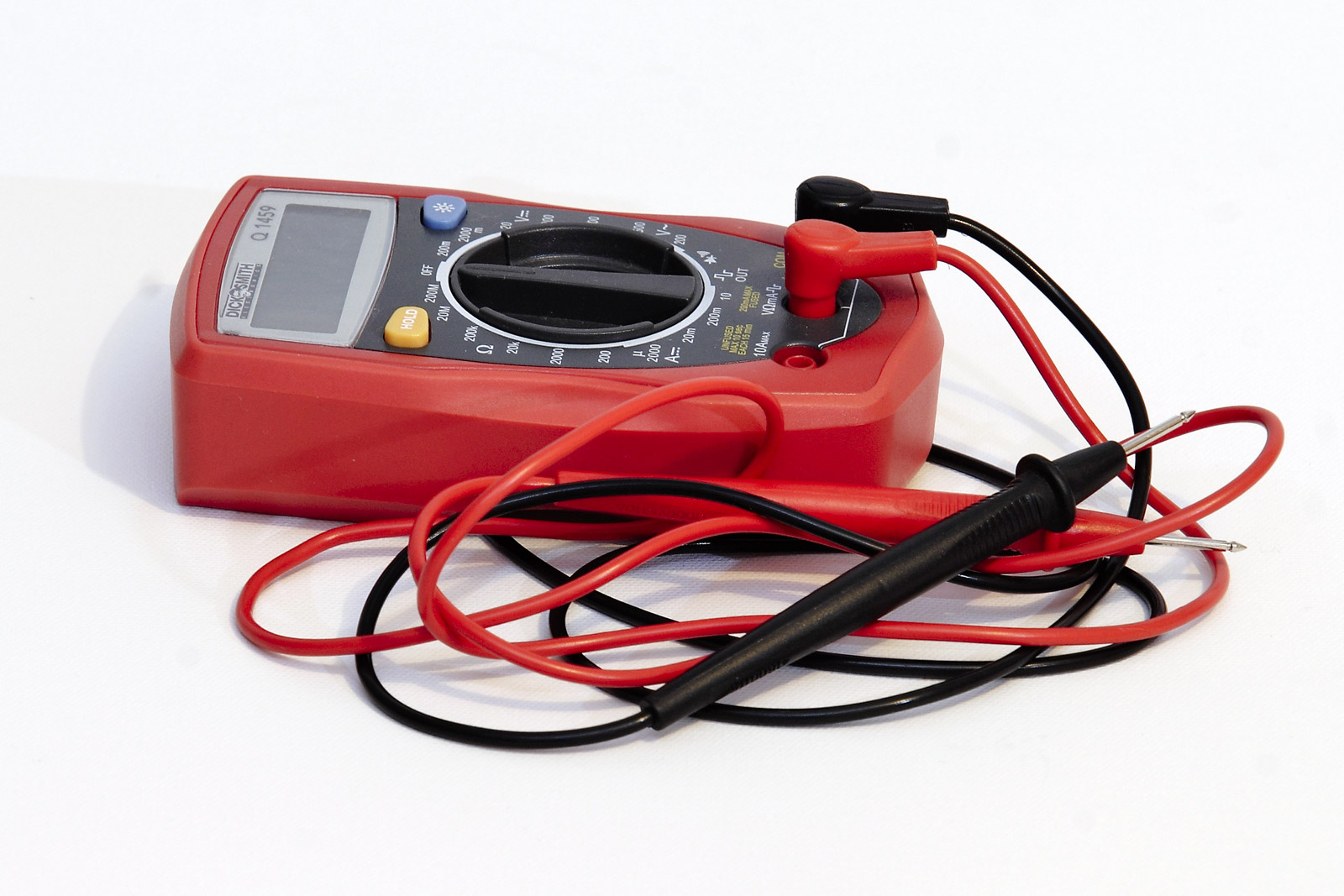|
LVCMOS
Low voltage complementary metal oxide semiconductor (LVCMOS) is a low voltage class of CMOS technology digital integrated circuits. Overview To obtain better performance and lower costs, semiconductor manufacturers reduce the device geometries of integrated circuits. With each reduction the associated operating voltage must also be reduced in order to maintain the same basic operational characteristics of the transistors. As semiconductor technology has progressed, LVCMOS power supply voltage and interface standards for decreasing voltages have been defined by the Joint Electron Device Engineering Council (JEDEC) for digital logic levels lower than 5 volts. References {{Reflist, 30em, refs= {{cite web , title=JEDEC Standard JESD8C.01 — Interface Standard for 3.3V (Normal Range) Power Supply Voltage for Nonterminated Digital Integrated Circuits , url=https://www.jedec.org/system/files/docs/JESD8C-01.pdf , date=September 2007 , website=JEDEC , accessdate=March 5, 2019 {{cite web ... [...More Info...] [...Related Items...] OR: [Wikipedia] [Google] [Baidu] |
CMOS
Complementary metal–oxide–semiconductor (CMOS, pronounced "sea-moss ", , ) is a type of MOSFET, metal–oxide–semiconductor field-effect transistor (MOSFET) semiconductor device fabrication, fabrication process that uses complementary and symmetrical pairs of p-type semiconductor, p-type and n-type semiconductor, n-type MOSFETs for logic functions. CMOS technology is used for constructing integrated circuit (IC) chips, including microprocessors, microcontrollers, memory chips (including Nonvolatile BIOS memory, CMOS BIOS), and other digital logic circuits. CMOS technology is also used for analog circuits such as image sensors (CMOS sensors), data conversion, data converters, RF circuits (RF CMOS), and highly integrated transceivers for many types of communication. In 1948, Bardeen and Brattain patented an insulated-gate transistor (IGFET) with an inversion layer. Bardeen's concept forms the basis of CMOS technology today. The CMOS process was presented by Fairchild Semico ... [...More Info...] [...Related Items...] OR: [Wikipedia] [Google] [Baidu] |
Integrated Circuits
An integrated circuit (IC), also known as a microchip or simply chip, is a set of electronic circuits, consisting of various electronic components (such as transistors, resistors, and capacitors) and their interconnections. These components are etched onto a small, flat piece ("chip") of semiconductor material, usually silicon. Integrated circuits are used in a wide range of electronic devices, including computers, smartphones, and televisions, to perform various functions such as processing and storing information. They have greatly impacted the field of electronics by enabling device miniaturization and enhanced functionality. Integrated circuits are orders of magnitude smaller, faster, and less expensive than those constructed of discrete components, allowing a large transistor count. The IC's mass production capability, reliability, and building-block approach to integrated circuit design have ensured the rapid adoption of standardized ICs in place of designs using discre ... [...More Info...] [...Related Items...] OR: [Wikipedia] [Google] [Baidu] |
Joint Electron Device Engineering Council
The Joint Electron Device Engineering Council (JEDEC) Solid State Technology Association is a consortium of the semiconductor industry headquartered in Arlington, United States. It has over 300 members and is focused on standardization of part numbers, defining an electrostatic discharge (ESD) standard, and leadership in the lead-free manufacturing transition. The origin of JEDEC traces back to 1944, when RMA (subsequently renamed EIA) and NEMA established the Joint Electron Tube Engineering Council (JETEC) to coordinate vacuum tube type numberings. In 1958, with the advent of semiconductor technology, the joint JETEC-activity of EIA and NEMA was renamed into Joint Electron Device Engineering Council. NEMA discontinued its involvement in 1979. In the fall of 1999, JEDEC became a separate trade association under the current name, but maintained an EIA alliance, until EIA ceased operations in 2011. History The origin of JEDEC can be traced back to 1944, when the Radio M ... [...More Info...] [...Related Items...] OR: [Wikipedia] [Google] [Baidu] |
JEDEC
The Joint Electron Device Engineering Council (JEDEC) Solid State Technology Association is a consortium of the semiconductor industry headquartered in Arlington County, Virginia, Arlington, United States. It has over 300 members and is focused on standardization of part numbers, defining an electrostatic discharge (ESD) standard, and leadership in the RoHS, lead-free manufacturing transition. The origin of JEDEC traces back to 1944, when Radio Manufacturers Association, RMA (subsequently renamed Electronic Industries Alliance , EIA) and National Electrical Manufacturers Association, NEMA established the Joint Electron Tube Engineering Council (JETEC) to coordinate vacuum tube type list of vacuum tubes, numberings. In 1958, with the advent of semiconductor technology, the joint JETEC-activity of Electronic Industries Association, EIA and NEMA was renamed into Joint Electron Device Engineering Council. NEMA discontinued its involvement in 1979. In the fall of 1999, JEDEC became ... [...More Info...] [...Related Items...] OR: [Wikipedia] [Google] [Baidu] |
Volts
The volt (symbol: V) is the unit of electric potential, electric potential difference (voltage), and electromotive force in the International System of Units (SI). Definition One volt is defined as the electric potential between two points of a conducting wire when an electric current of one ampere dissipates one watt of power between those points. It can be expressed in terms of SI base units ( m, kg, s, and A) as : \text = \frac = \frac = \frac = \text\text^2\text^. Equivalently, it is the potential difference between two points that will impart one joule of energy per coulomb of charge that passes through it. It can be expressed in terms of SI base units ( m, kg, s, and A) as : \text = \frac = \frac = \frac = \text\text^2\text^. It can also be expressed as amperes times ohms (current times resistance, Ohm's law), webers per second (magnetic flux per time), watts per ampere (power per current), or joules per coulomb (energy per charge), which is also equival ... [...More Info...] [...Related Items...] OR: [Wikipedia] [Google] [Baidu] |
Volt
The volt (symbol: V) is the unit of electric potential, Voltage#Galvani potential vs. electrochemical potential, electric potential difference (voltage), and electromotive force in the International System of Units, International System of Units (SI). Definition One volt is defined as the electric potential between two points of a electrical conductor, conducting wire when an electric current of one ampere dissipates one watt of power (physics), power between those points. It can be expressed in terms of SI base units (metre, m, kilogram, kg, second, s, and ampere, A) as : \text = \frac = \frac = \frac = \text\text^2\text^. Equivalently, it is the potential difference between two points that will impart one joule of energy per coulomb of charge that passes through it. It can be expressed in terms of SI base units (metre, m, kilogram, kg, second, s, and ampere, A) as : \text = \frac = \frac = \frac = \text\text^2\text^. It can also be expressed as amperes times ohms (curre ... [...More Info...] [...Related Items...] OR: [Wikipedia] [Google] [Baidu] |
Transistor–transistor Logic
Transistor–transistor logic (TTL) is a logic family built from bipolar junction transistors (BJTs). Its name signifies that transistors perform both the logic function (the first "transistor") and the amplifying function (the second "transistor"), as opposed to earlier resistor–transistor logic (RTL) and diode–transistor logic (DTL). TTL integrated circuits (ICs) were widely used in applications such as computers, industrial controls, test equipment and instrumentation, consumer electronics, and synthesizers. After their introduction in integrated circuit form in 1963 by Sylvania Electric Products, TTL integrated circuits were manufactured by several semiconductor companies. The 7400 series by Texas Instruments became particularly popular. TTL manufacturers offered a wide range of logic gates, flip-flops, counters, and other circuits. Variations of the original TTL circuit design offered higher speed or lower power dissipation to allow design optimization. TTL devices w ... [...More Info...] [...Related Items...] OR: [Wikipedia] [Google] [Baidu] |
JEDEC Standards
The Joint Electron Device Engineering Council (JEDEC) Solid State Technology Association is a consortium of the semiconductor industry headquartered in Arlington, United States. It has over 300 members and is focused on standardization of part numbers, defining an electrostatic discharge (ESD) standard, and leadership in the lead-free manufacturing transition. The origin of JEDEC traces back to 1944, when RMA (subsequently renamed EIA) and NEMA established the Joint Electron Tube Engineering Council (JETEC) to coordinate vacuum tube type numberings. In 1958, with the advent of semiconductor technology, the joint JETEC-activity of EIA and NEMA was renamed into Joint Electron Device Engineering Council. NEMA discontinued its involvement in 1979. In the fall of 1999, JEDEC became a separate trade association under the current name, but maintained an EIA alliance, until EIA ceased operations in 2011. History The origin of JEDEC can be traced back to 1944, when the Radio Ma ... [...More Info...] [...Related Items...] OR: [Wikipedia] [Google] [Baidu] |




